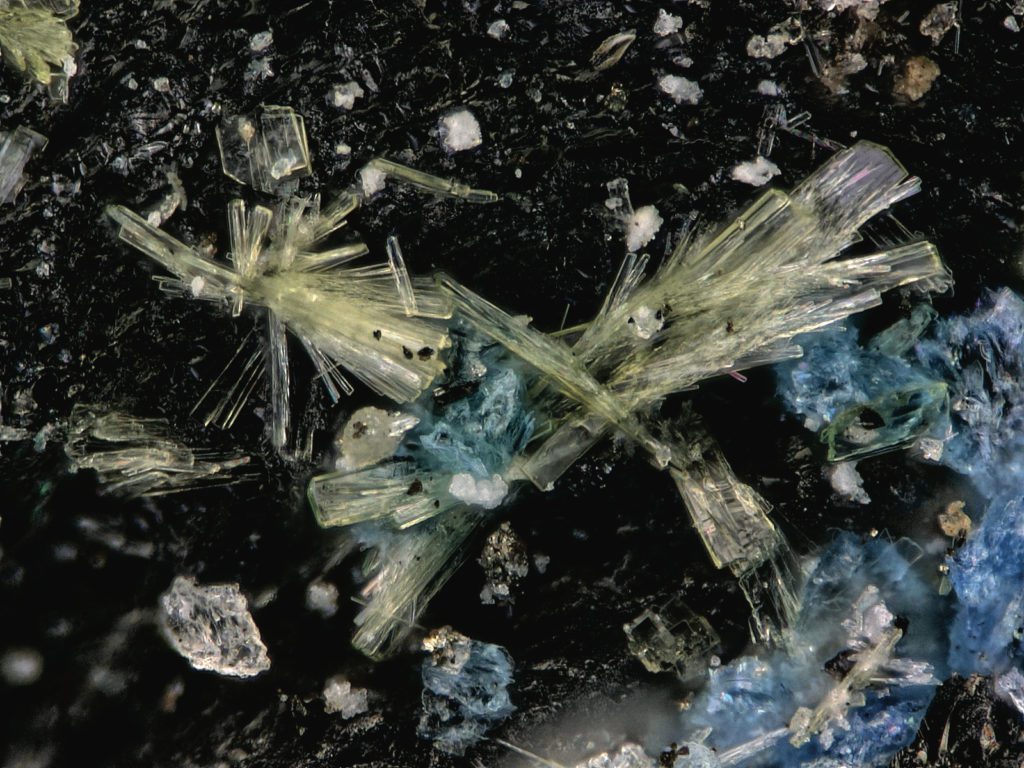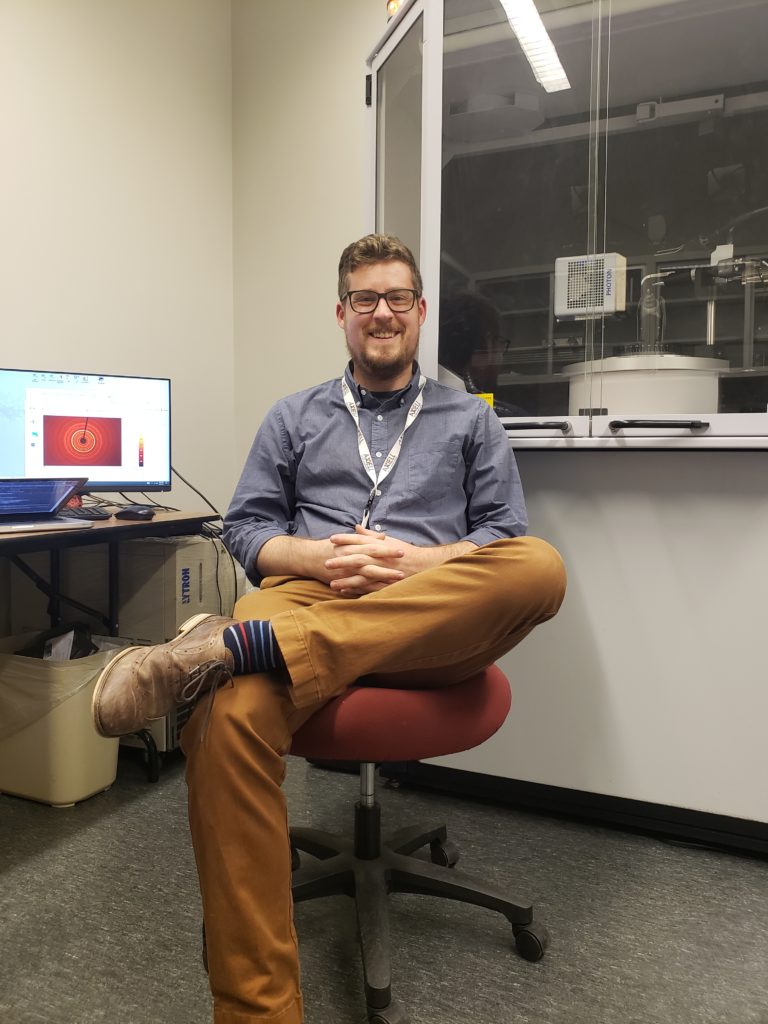
Carnegie Museum of Natural History announces the naming of the new mineral Oldsite after Dr. Travis Olds, the museum’s Assistant Curator of Minerals. The International Mineralogical Association (IMA) verified the mineral, which was accepted in October 2021 by an international team of scientists. Oldsite is named in recognition of Olds’ contributions to uranium minerology.
Collected at Utah’s North Mesa mines near Temple Mountain, Oldsite forms from the interaction of air and water with uranium and iron-sulfide ores in the humid underground environment, leading to crystalline deposits on the surfaces of mine walls. Oldsite occurs as tiny yellow, rectangular blades measuring up to 0.3 millimeters in length. The crystals are thin and brittle and dissolve in water.
The holotype specimen of Oldsite, or original specimen to be named, is held in the collections of the Natural History Museum of Los Angeles County. Its chemical formula is K2Fe2+[(UO2)(SO4)2]2(H2O)8.
“I’m honored to be the namesake of such a fascinating mineral,” said Olds. “My research focuses on descriptive minerology, particularly minerals containing uranium, which has been my passion since I knew I wanted to become a mineralogist. Oldsite is unique because it helps us fill in some puzzle pieces about how uranium behaves in the environment. The way its atoms connect to each other in the crystal structure tells us about the conditions that led to its formation. This information can be useful to help keep uranium out of drinking water, or to clean up nuclear waste.”

The research team that discovered and described Oldsite includes Dr. Jakub Plášil from the Czech Republic’s Institute of Physics ASCR, Dr. Anthony R. Kampf of the Natural History Museum of Los Angeles County, Dr. Chi Ma of California Institute of Technology, and German mineralogist Joy Desor.
About Travis Olds
Olds is assistant curator of minerals at Carnegie Museum of Natural History’s Section of Minerals and Earth Sciences. He obtained his B.S. in chemistry from Michigan Technological University in 2012 and received his Ph.D. from the University of Notre Dame in 2017, where he explored the mineralogy and crystallography of the radioactive elements uranium and neptunium. From 2017-2019 Olds conducted post-doctoral research at Washington State University, as a part of the U.S. Department of Energy-funded Actinide Ceramic Materials Laboratory, which investigates the materials science of nuclear fuel. His research focuses on the structure-property relationships of minerals and materials, employing spectroscopic, diffraction and particle scattering techniques to study them at the atomic scale. Olds has discovered or been involved in the description of 24 new minerals, of which 21 contain uranium.
